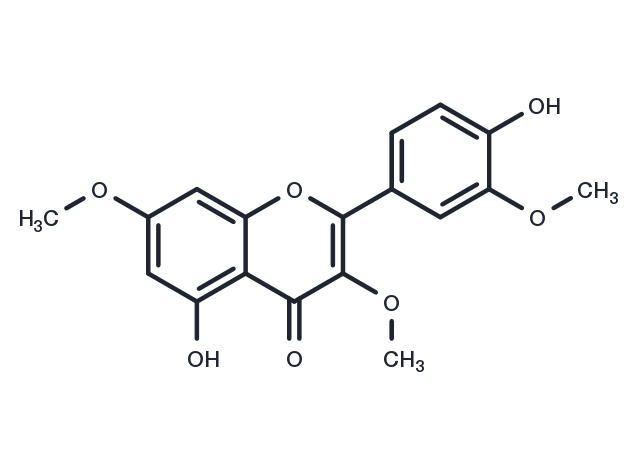Powder: -20°C for 3 years | In solvent: -80°C for 1 year


Pachypodol has antibacterial and antifungal activities against Bacillus subtilis, Staphylococcus aureus, Staphylococcus faecalis, Echerichia coli, Pseudomonas aeruginosa, Candida albicans, Candida krusei and Candida galabrata.

| Description | Pachypodol has antibacterial and antifungal activities against Bacillus subtilis, Staphylococcus aureus, Staphylococcus faecalis, Echerichia coli, Pseudomonas aeruginosa, Candida albicans, Candida krusei and Candida galabrata. |
| In vitro | Pachypodol (5,4'-dihydroxy-3,7,3'-trimethoxyflavone) has been isolated from the leaves of C. floribunda by repeated column chromatography on silica gel, and the structure confirmed by spectroscopic means. While the general toxicity of Pachypodol was determined by the brine shrimp lethality assay, the cytotoxic potential of this flavonoid has been evaluated by the Promega's CellTiter 96 Non-Radioactive Cell Proliferation Assay using the CaCo-2 colon cancer cell line (IC(50) = 185.6 microM). A summary of the biological activities of Pachypodol reported to date is also presented[1] |
| Source |
| Molecular Weight | 344.32 |
| Formula | C18H16O7 |
| CAS No. | 33708-72-4 |
Powder: -20°C for 3 years | In solvent: -80°C for 1 year
You can also refer to dose conversion for different animals. More
bottom
Please see Inhibitor Handling Instructions for more frequently ask questions. Topics include: how to prepare stock solutions, how to store products, and cautions on cell-based assays & animal experiments, etc.
Pachypodol 33708-72-4 Microbiology/Virology Antifection inhibitor inhibit
